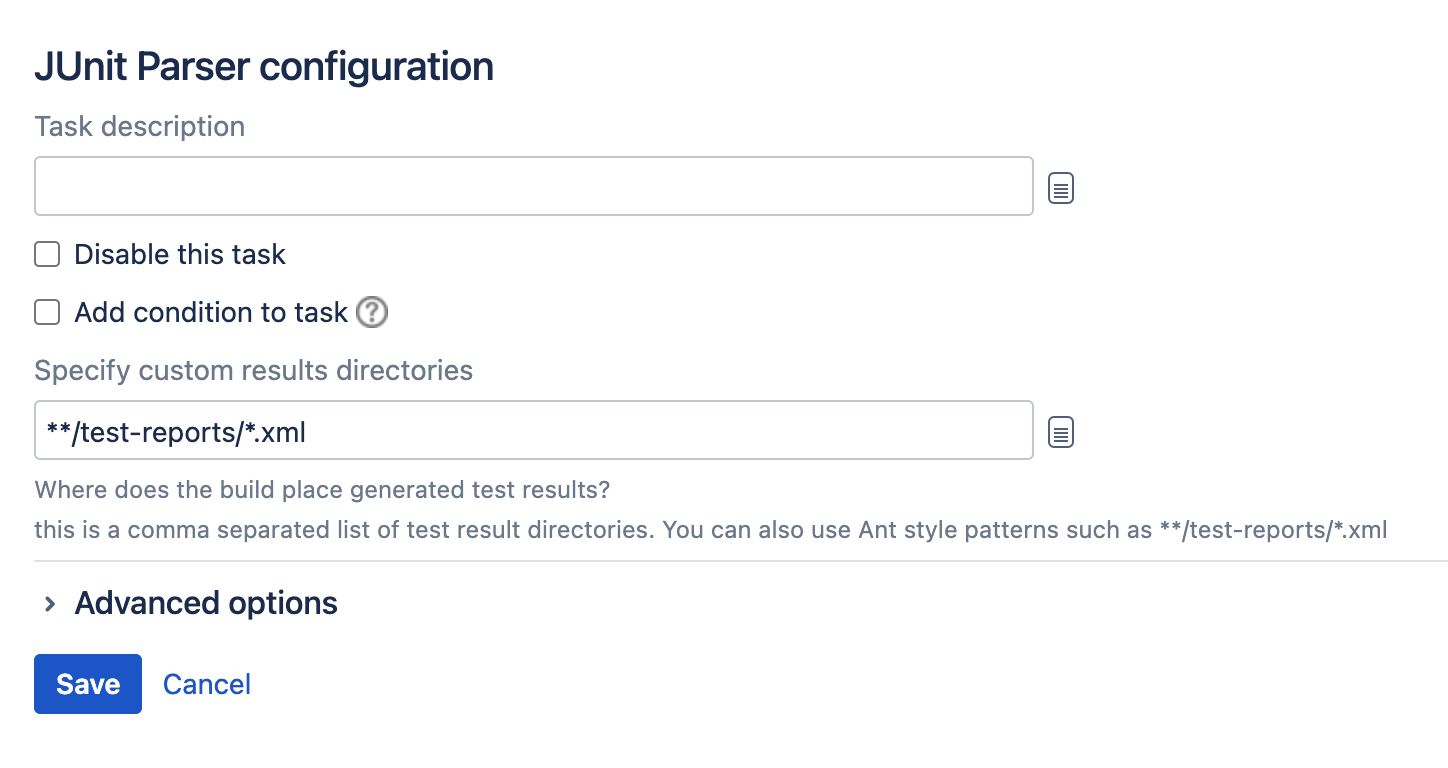JUnit Parser
This page describes how to configure a Bamboo task to parse JUnit test results.
Because TestNG uses the JUnit XML format, the JUnit Parser task is also able to parse TestNG test results.
Before you begin:
- Java builder tasks in Bamboo (e.g. Maven) parse test information as part of the task. You do not need to configure a test task, if you have specified that test results will be produced as part of the builder task.
Related pages:
Atlassian blogs:
To configure a JUnit Parser task:
- Navigate to the Tasks configuration tab for the job (this will be the default job if creating a new plan).
- Select the name of an existing JUnit Parser task, or select Add task > JUnit Parser to create a new task.
- Update the task settings:
Task description
Enter a description of the task, for display in Bamboo.
Disable this task
Check, or clear, to selectively run this task.
Add condition to task
Make task run only when a certain condition is met.
You can find conditions on Atlassian Marketplace or implement your own.
Specify custom results directories
Enter the name of the test results directory (or multiple directories, separated by commas). You can also use Ant-style patterns such as**/test-reports/*.xml/ where the base directory is the "working directory" – this can be found at the start of your build log. Do not specify an absolute path.
For jobs that use CVS, the job build's root directory is<bamboo-home>/xml-data/build-dir/JOB_KEY/<cvs-module>. - Select Save.
